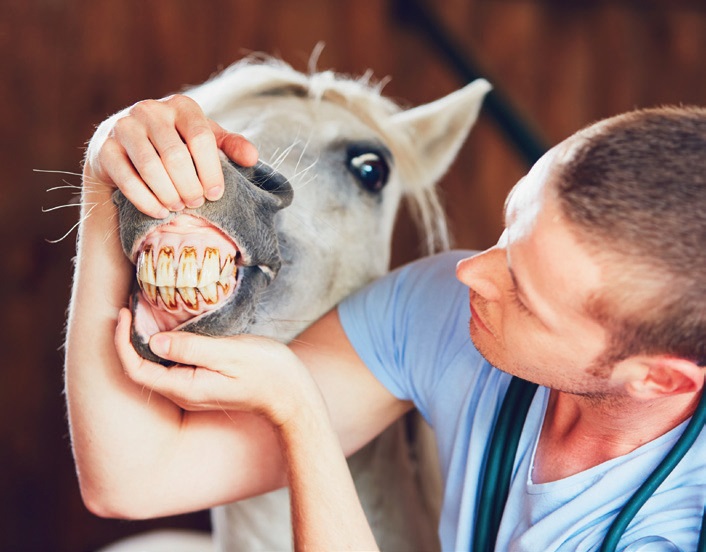Galvayne’s groove
Evan Zabawski | TLT From the Editor April 2019
Why shouldn’t you look a gift horse in the mouth?

A method for determining age that was not his own, nor published under his real name, and is not correct either.
© Can Stock Photo / chalabala
There is a tribological root to the proverb “don’t look a gift horse in the mouth.” The proverb first appeared in print during the 5th Century within St. Jerome’s Commentary on the Epistle to the Ephesians as “Noli equi dentes inspicere donate.” Its meaning is a warning not to appear ungrateful by seeking the value of a gift, exemplified by inspecting the wear of a gifted horse’s teeth to determine its age (value).
An age determination is not at all difficult for very young horses; one only has to look at which teeth are present to obtain a reasonable estimate. According to equine dentists, between 2.5-5 years of age horses lose 24 deciduous teeth and erupt 36-44 teeth. Once these adult teeth erupt, they will continue to grow with age.
This continued growth is mostly offset by wear, though the combination of growth and a little recession to the gums gave rise to another equine idiom indicating advanced age: “long in the tooth.” As the horse’s teeth wear, several observable patterns commensurate with age emerge on the occlusal surfaces of the incisors. Occlusal is the surface of the tooth used for chewing and grinding, mesial is the forward surface, distal is the rearward surface, buccal is the outer, cheek-facing surface and lingual is the inner, tongue-facing surface.
Horse’s incisors are formed with a funnel-shaped cavity called the infundibulum, and as the occlusal surface wears the center of the infundibulum, called a cup, shrinks. Around eight years of age the cup disappears and leaves behind the enamel spot, which is the deepest part of the infundibulum. At about the same time the wear exposes the pulp cavity, which first appears as a line and progresses to a large, round spot. The spot is referred to as a dental star and remains visible after the cup and enamel spot have worn away.
As the horse continues to age, the focus turns to a groove that appears on the buccal surface at 10 years of age, then by the age of 15 it will extend about halfway down the tooth, all the way to the bottom by the age of 20, half gone by age 25 and completely gone by the age of 30. This criterion was popularized in a small book by a horse trainer going by the name of Sydney Galvayne.
This man claimed to have been born in Australia in 1846; however, he was actually an Englishman by the name of Frederick Henry Attride who was born in the heart of London at Camberwell in 1848. Attride traveled through Europe in carnivals with Gypsies where his act was to determine the age of a horse by looking into its mouth using a secret he claimed to have learned from these Gypsies. In reality, he had moved to Australia in 1876, where he learned this secret in 1880 from an American horse tamer who styled himself as professor Sample.
In 1884 Attride reinvented himself as professor Sydney Frederick Galvayne, then returned to England in 1885 where he published Horse Dentition: Showing How to Tell Exactly the Age of a Horse up to Thirty Years, with Tabulated Forms of Cattle and Sheep Dentition. The popularity of this book earned Galvayne fame via his eponymous groove, the basis of a method for determining age that was not his own, nor published under his real name, which went largely uncontested for over a century until proven it wasn’t accurate.
In the early 1990s Dr. J.D. Richardson and her team studied 434 thoroughbreds and correlated their ages with dental features. The paper, Is Dentition an Accurate Indication of the Age of a Horse?, was published in 1994 and concluded the answer to be no. Dr. Richardson even invited experienced veterinarians to attempt to use dentition, and later developed a computer model, but both attempts failed to improve accuracy.
It is fair to say that some degree of age can be determined by looking in a horse’s mouth, but one should not put too much stock in anyone proclaiming a high degree of accuracy for any horse much older than five years of age, as eruptions are consistent, but wear is not.
Evan Zabawski, CLS, is the senior technical advisor for TestOil in Calgary, Alberta, Canada. You can reach him at ezabawski@testoil.com.